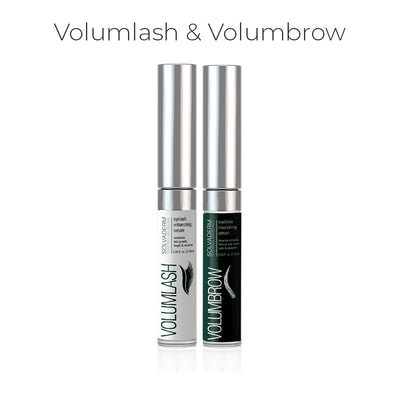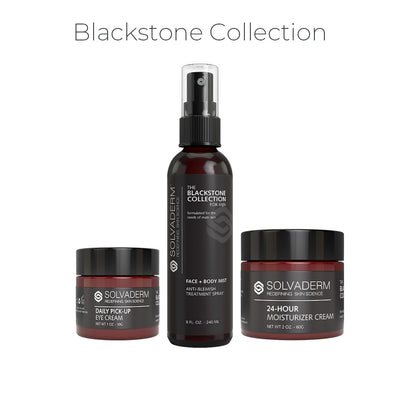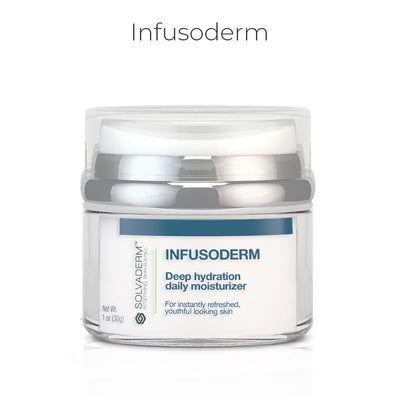Many people seek the care of a dermatologist for dry and bumpy skin on the face, especially in dryer seasons like fall and winter. Bumpy skin usually has a rough texture and a prominent appearance and could impact self-esteem in some people.
Do you have dry, bumpy skin on your face? Do you want to improve your skin texture? Fortunately, there are a myriad of methods that can help restore the normal appearance and health of your skin.
However, before choosing the optimal treatment for dry and bumpy skin on the face and body, it is essential to understand the underlying reasons for its development.
Let’s break down some of the most common causes and get into the details of how to get rid of bumpy skin on the face for good!
What Is Bumpy Skin?
Bumpy skin on the face and body is usually a harmless dermatological condition that can vary in appearance, depending on the individual. These are the most common symptoms you may experience:
- Rough and hard to the touch
- Redness
- Small raised. red bumps
- Small raised, white bumps
- Movable to the touch
Some of the most common causes of dry and bumpy skin on the face include dead skin cell buildup, slow skin cell turnover, infection, allergic reactions, and excessive dryness. In rare cases, rough skin may result from genetic factors.
Types of Bumpy Skin
How you treat bumpy skin on the face largely depends on the type, as there are several classifications. Uneven skin is often associated with conditions like acne, rosacea, and keratosis pilaris. These are some of the most common types:
Acne: Acne is an inflammatory skin condition that occurs when dead skin cells, sebum, oil, dirt, bacteria, and other impurities clog the pores, leading to red, irritated lesions we call zits or pimples. There are different forms of acne, but they are all associated with bumps on the skin. Common types include whiteheads, blackheads, papules, pustules, and nodules.[1]
Rosacea: Rosacea is a skin condition associated with severe face flushing and sometimes enlarged blood vessels and small bumps with or without pus. In addition to flushing and bumpy skin, rosacea can cause a burning sensation.[2]
Keratosis Pilaris: People also refer to keratosis pilaris as chicken or strawberry skin. It’s a skin condition characterized by clusters of small, rough bumps commonly found on the arms, legs, and buttocks.[3]
Keratosis pilaris results from the overproduction of the protein keratin. Most medical professionals are unsure about the exact causes of keratin buildup, but some possibilities are genetics, inflammation, atopic dermatitis, and excessive dryness.
Other Skin Conditions With Bumpy Skin Symptoms
Eczema: This is an inflammatory skin condition that leads to dry, rough, and flaky patches that can be red, brown, white, and even gray, depending on your skin tone.[4] Eczema is sometimes accompanied by small irritated bumps, especially if you come into contact with an allergen that triggers a rash.
Allergies: An allergic reaction could cause bumpy skin on the face. When you come in contact with an allergen like dust, mold, pollen, or animal fur, your body produces an immune response that ultimately results in a rash.[5]
The rash may have welts, bumpy skin, redness, irritation, and itchiness. The inflammation and irritation caused by the allergic reaction could also trigger other skin conditions like eczema.
How to Get Rid of Bumpy Skin on the Face: Tips and Tricks
These are some of the most effective tips and tricks that will help you get rid of bumpy skin on your complexion for good.
Identify the Cause: The underlying cause significantly impacts how to treat bumpy skin on the face. If you’re unsure of the exact cause of your bumps, we suggest you consult a dermatologist or allergist for further guidance.
These medical professionals can perform a thorough examination, take your history, and do extensive testing to identify the culprit of the bumpy skin on your face. Standard tests include patch testing, skin swabs, and scrapings.
Cleanse Gently: Properly cleansing your skin prevents dead cells, dirt, oil, and sebum from clogging the pores and forming bumps. We recommend an effective, gentle cleanser that doesn’t upset the delicate moisture balance. Over-stripping your skin can lead to excessive dryness and trigger dry and bumpy skin.
The Dermpura Skin Balancing Cleanser removes dirt and impurities and leaves your face feeling soft, hydrated, and smooth. The formula is rich in vitamins and antioxidants that soothe the irritated, inflamed skin associated with a dry, bumpy complexion. This optimal all-natural cleanser is suitable for all ages and skin types.
Exfoliate Weekly: Exfoliating your skin removes dead skin cells and promotes renewal. Exfoliation once or twice weekly is essential for dry and bumpy skin conditions like keratosis pilaris, considering its underlying pathology involves blocked pores.
Many physical exfoliants, like body scrubs, are too harsh for dry and bumpy skin on the face and body and could exacerbate conditions like eczema, keratosis pilaris, and acne. Instead, we recommend the more gentle acid exfoliant Glowpeel Exfoliation and Skin Resurfacing Repair Serum.
This serum has a gentle formula compared to many exfoliation scrubs and is equally as powerful. It contains natural fruit acids that remove dead skin cells for a brighter, more even texture. After only two weeks of use, customers have reported a significant reduction in uneven patches of skin. It’s a good idea to have the Glowpeel Exfoliation and Skin Resurfacing Repair Serum in your skincare toolbox if you frequently deal with dry, bumpy skin on your face.
Moisturize Daily: When researching how to treat bumpy skin on the face, choose a moisturizer that delicately balances exfoliation and hydration. This will help slough off dead skin cells and replace lost moisture to remedy dryness and itchiness.
We recommend the Infusoderm Deep Hydration Daily Moisturizer to keep itchy, bumpy skin at bay. It’s a lightweight formula that provides deep hydration. The formula contains unique ingredients like snow algae and cloudberry, which promote a healthy complexion and protect the skin from irritating environmental pollutants.
Use Sun Protection: Prevention is the key to healing dry, bumpy skin conditions. Excessive sun exposure[6] can lead to photoaging, and this may include unbalanced skin tone, wrinkles, fine lines, red and rough scaly patches, hyperpigmentation, and uneven skin texture.
Aside from applying sunscreen with SPF whenever you go outside, the American Academy of Dermatology[7] also recommends seeking shade when the sun’s rays are the strongest and wearing sun-protective clothing. Clothing that protects you from the sun has a label with UPF alongside a number.
Follow a Healthy Diet and Hydrate: A healthy diet supplies your skin with essential cofactors that boost cell turnover, hydration, and immunity. Following a diet rich in nuts, seeds, fruits, and vegetables provides the complexion with the essential fatty acids, vitamins, minerals, and antioxidants required to perform everyday functions.
Research[8] indicates that foods rich in omegas, such as flaxseeds and fatty fish, are especially effective at keeping the skin hydrated and supporting a strong skin barrier.
However, your diet includes what you eat and what you drink. Ensure you drink enough water daily to keep your body and skin hydrated. Research[9] shows that a high water intake positively impacts your skin physiology and supports healthy moisture barrier function.
Avoid Picking and Squeezing: When you are frustrated with your skin's appearance, it is tempting to poke and prod. However, try to leave your trouble areas alone as much as possible.
Picking or squeezing dry and bumpy skin on your face could increase irritation and inflammation. If you are having a hard time not itching, consult your dermatologist, who can suggest interventions for symptomatic relief.
FAQs
If you’re researching how to treat bumpy skin on the face, check out the sections below to find quick answers to commonly asked questions.
Why Is My Skin So Bumpy?
You may have bumpy skin on the face for various reasons. Here are some of the most common causes:
- Allergic reaction
- Dead skin cell buildup
- Acne
- Poor skin cell turnover
- Excessive dryness
- Eczema
- Rosacea
- Keratosis pilaris
Is Bumpy Skin Oily?
Yes, bumpy skin can be oily and is not exclusively associated with excessive dryness. People with oily skin may have bumpy skin on the face due to clogged pores.
Is Acne the Only Reason for Bumpy Skin on the Face?
Although acne is a common cause, other conditions that contribute to dry and bumpy skin on the face and body include eczema, psoriasis, rosacea, and keratosis pilaris.
Conclusion
Dry, bumpy skin on the face and body are common dermatological problems. There are several possible causes of bumpy skin, so identifying the reason for your condition is essential to ensure effective treatment.
Common causes of bumpy skin on the face and body include acne, eczema, rosacea, and keratosis pilaris. If you don’t have these conditions, you may still develop bumpy skin due to poor skin cell turnover, pore-clogging skincare ingredients, or buildup of dead skin cells.
You can start your journey to clear skin by following the tips highlighted under the “How to Get Rid of Bumpy Skin on the Face: Tips and Tricks” section. For additional support, we suggest consulting with your dermatologist or another healthcare professional.References
1] ↑https://www.niams.nih.gov/health-topics/acne
2] ↑https://www.mayoclinic.org/diseases-conditions/rosacea/symptoms-causes/syc-20353815
3] ↑https://www.mayoclinic.org/diseases-conditions/keratosis-pilaris/symptoms-causes/syc-20351149
4] ↑https://nationaleczema.org/eczema/
5] ↑https://acaai.org/allergies/allergic-conditions/skin-allergy/
6] ↑https://my.clevelandclinic.org/health/diseases/5240-sun-damage-protecting-yourself
7] ↑https://www.aad.org/news/new-aad-survey-reveals-growing-importance-sun-protection
8] ↑https://www.ncbi.nlm.nih.gov/pmc/articles/PMC7875671/
9] ↑https://www.ncbi.nlm.nih.gov/pmc/articles/PMC4529263/










